Abstract
N2 fixation in field-grown maize (Zea mays L.) plants was estimated by a nondestructive acetylene reduction method which permitted the plants to continue growing and produce seeds. Samples from six areas revealed mean nitrogenase activities of 74-2167 nmol of C2H4/(g of dry roots × hr) for 10 plants. Among 276 S1 lines planted in two field experiments, 17 lines were selected for further nitrogenase activity assays after prescreening. Variability within lines was high but significant differences among lines were obtained in one experiment. The best lines showed mean nitrogenase activities of 2026, 2315, and 7124 nmol of C2H4/(g of dry roots × hr), whereas the original cultivar reduced only 313 nmol. The highest value approaches the nitrogenase activity of soybean. If the theoretical 3:1 (C2H4/N2 reduced) conversion factor is used, a potential daily N2 fixation of 2 kg of N2/hectare can be calculated. Periodic sampling within a brachytic maize cultivar revealed that maximum nitrogenase activity occurred at about the 75% silking stage. Soil effects also were pronounced. N2-fixing Spirillum sp. could be isolated from all active root pieces when they were surface sterilized. These organisms appear to be primarily responsible for root nitrogenase activity in maize.
Keywords: grass-bacteria associations, Spirillum lipoferum, acetylene reduction
Full text
PDF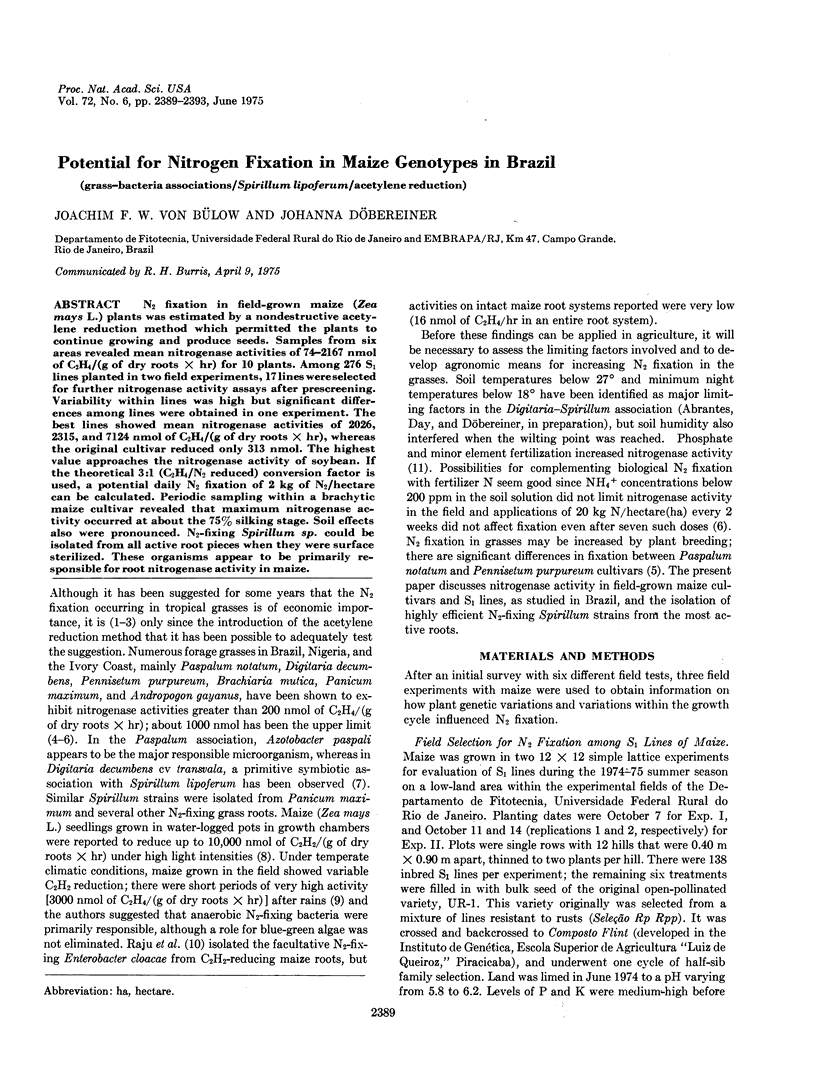
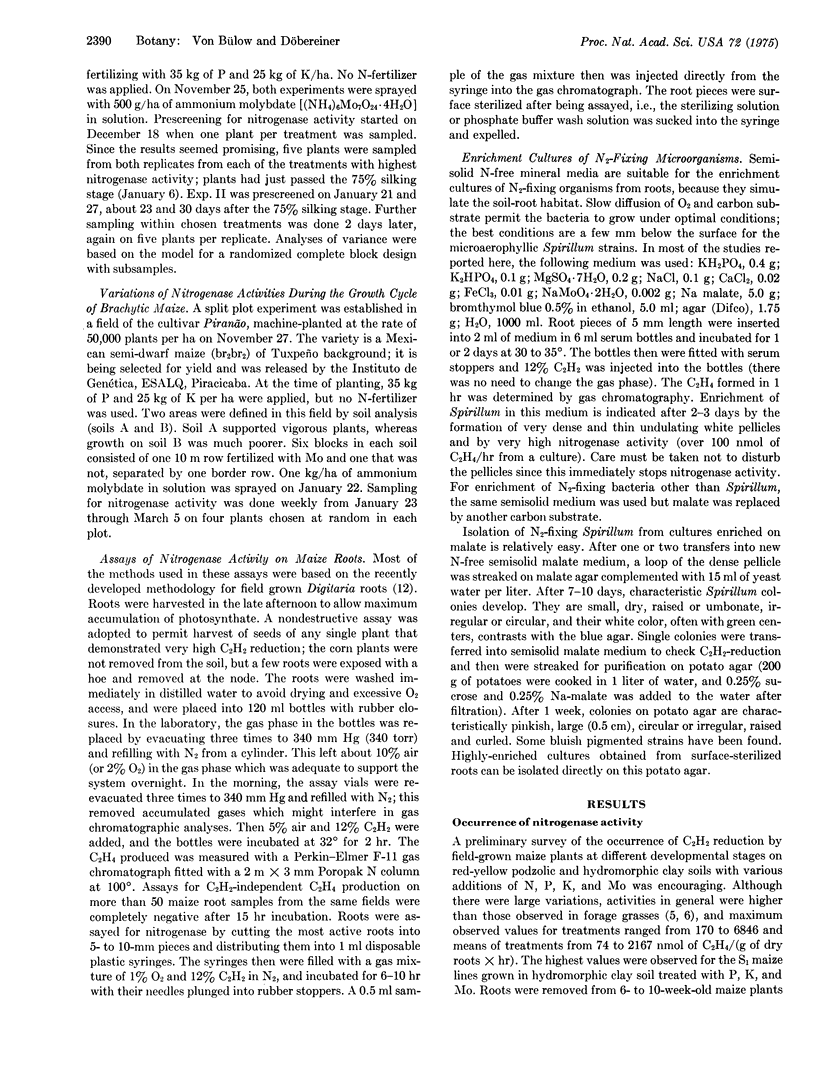
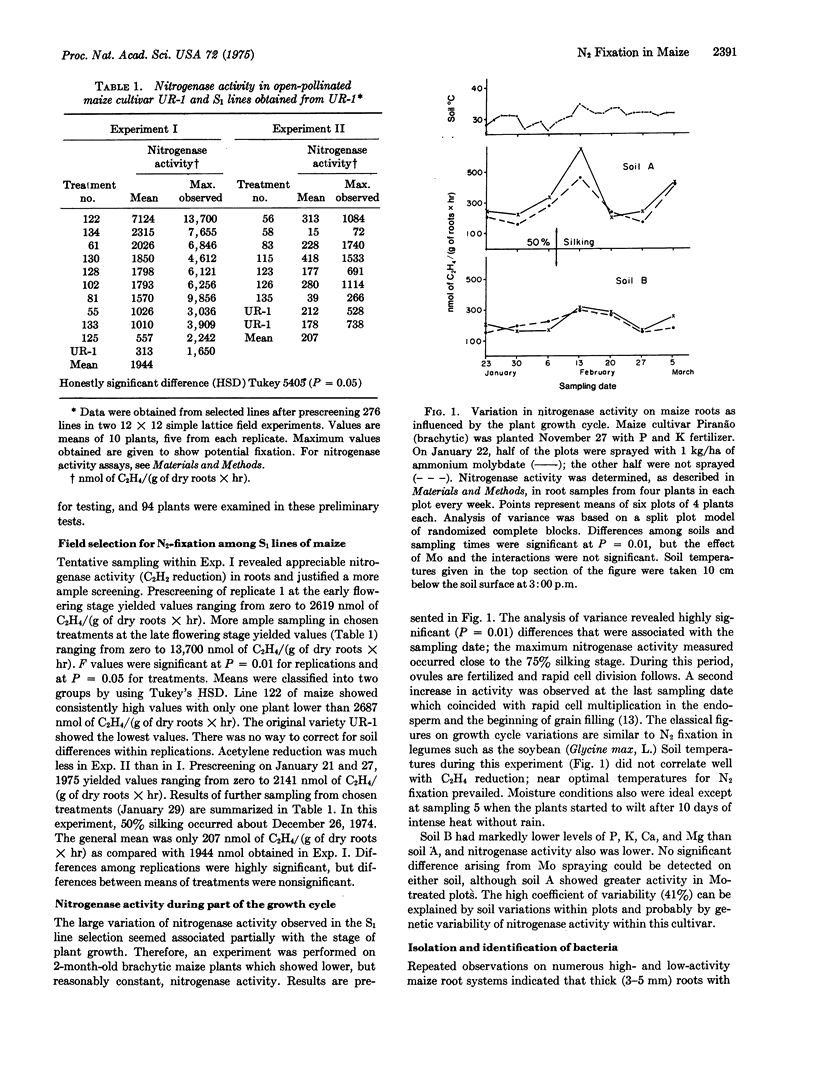
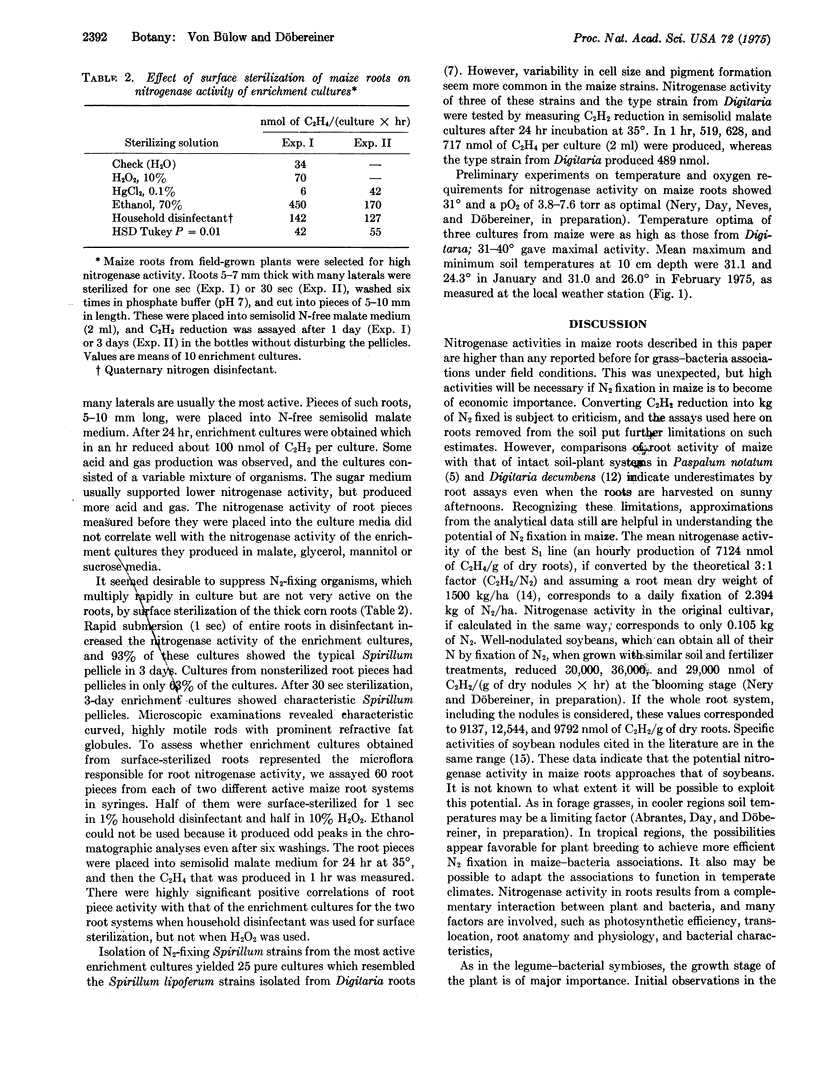
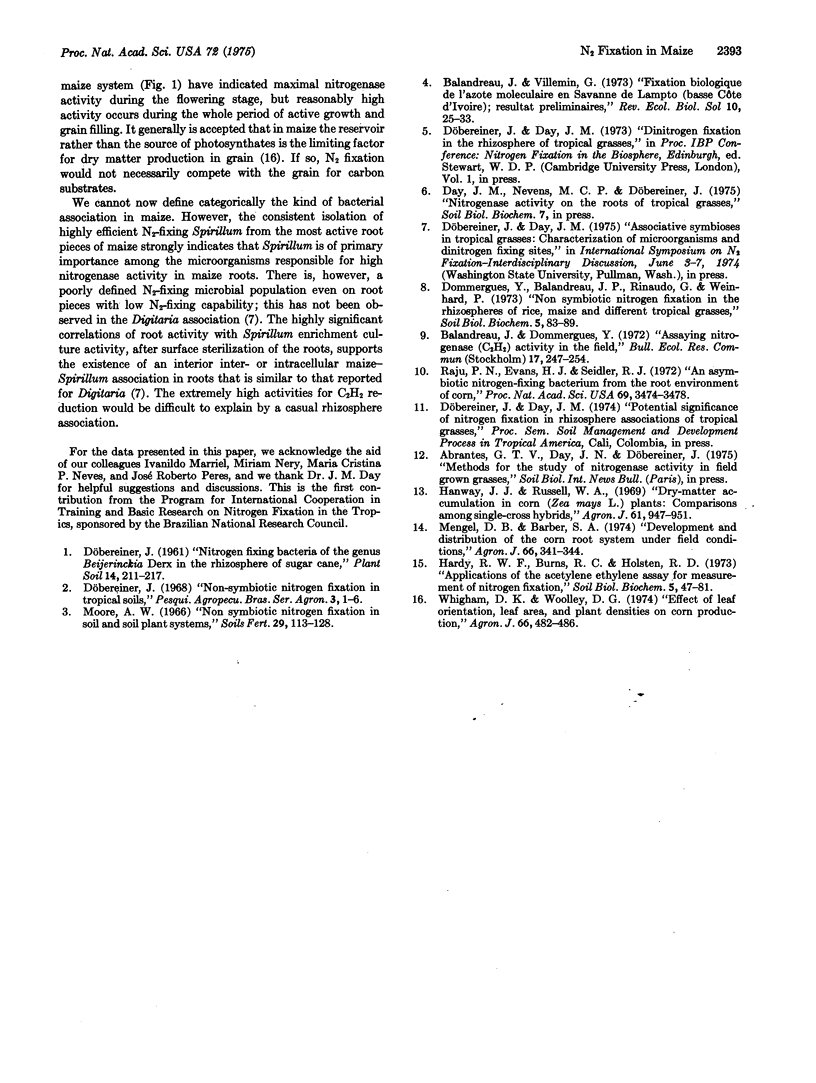
Selected References
These references are in PubMed. This may not be the complete list of references from this article.
- Raju P. N., Evans H. J., Seidler R. J. An asymbiotic nitrogen-fixing bacterium from the root environment of corn. Proc Natl Acad Sci U S A. 1972 Nov;69(11):3474–3478. doi: 10.1073/pnas.69.11.3474. [DOI] [PMC free article] [PubMed] [Google Scholar]


